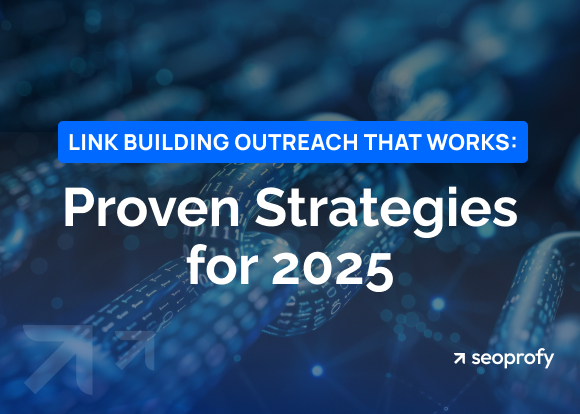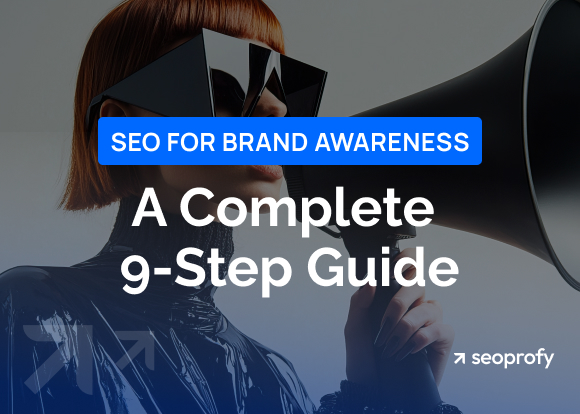Your website looks great, but you’re not getting enough visitors? Stuck trying to figure out how to bring more users to your site? To turn things around, you need some proven ways to increase organic traffic that actually deliver.
A lot of website owners face this issue: money and effort invested, but users aren’t showing up. A solid SEO strategy is exactly what you need to get more organic traffic. Let’s take a look at the approaches you can start using now to bring more users to your site in the nearest future.
- Search engines don’t just evaluate keywords, but also their connections, user intent, and the readability of the text.
- Updating content can boost organic traffic.
- Technical issues like slow loading times, broken links, and a poor mobile version will hurt your rankings and traffic.
1. Fill Content Gaps to Match User Intent
Create content “primarily for people, and not to manipulate search engine rankings,” Google’s Guidelines state. To put it in business terms: If your content doesn’t answer users’ questions, it may lose its ranking in search results and a chance to improve organic search traffic.

No wonder 72% of marketers consider publishing high-quality content one of the most important on-page SEO strategies. So, figuring out how to increase organic traffic starts with content optimization. This includes proper keyword research, creating intent-driven content, adding entities, and beyond. Let’s take a look at what can be improved to make this strategy work better for your website.
Add Relevant Keywords to Align with Search Queries
For your content to drive organic traffic, it needs to match what people are searching for. That means using relevant keywords (phrases users type into the search bar) on your pages.
To find the right ones, use keyword research tools:
- Ahrefs shows search volume, competition, and even search intent.
- Google Keyword Planner suggests related queries and keyword variations.
When picking SEO keywords, consider competition levels. Short, broad terms like English language course are competitive and hard to rank for.
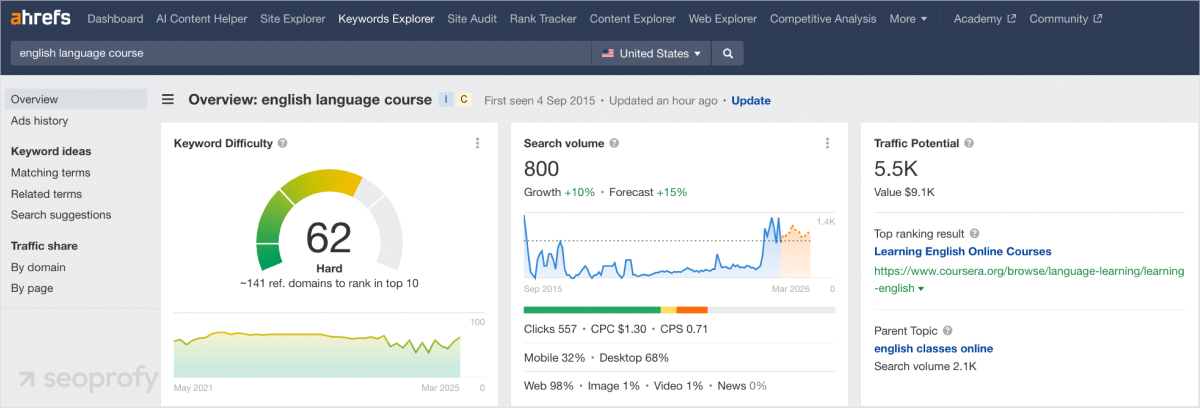
Long-tail keywords, such as English as a second language online course, are less common and are often easier to rank for. They are often searched by people who are ready to take action. A balanced keyword strategy includes both.

Then, analyze user intent. When someone searches for Google Ads campaign examples, they’re looking for case studies. A query how to increase organic search traffic shows they need a step-by-step guide.
So, the goal is to create content that answers the user’s search query and includes the keywords they use. However, over-optimization (cramming in a lot of keywords) makes content unreadable.
Enhance Content with Latent Semantic Indexing (LSI) Keywords
Related words, or contextually similar terms, help search engines understand the deeper meaning of your content. This is known as the semantic core of the text.
When Google sees that an article about yoga includes “asanas,” “pranayama,” and “meditation,” it can connect your content with user queries that may be phrased differently but are still about the same topic. This is called semantic relevance.
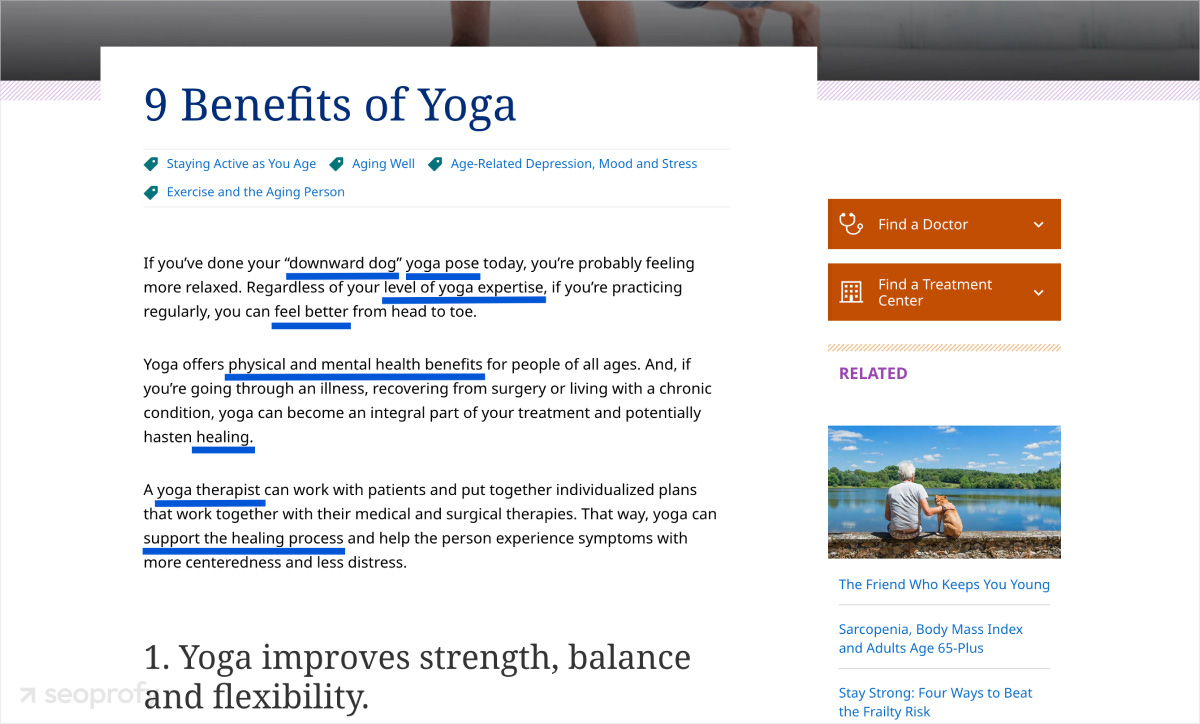
Use tools like LSIGraph or Ahrefs (Related Terms) to expand your content’s semantic core.
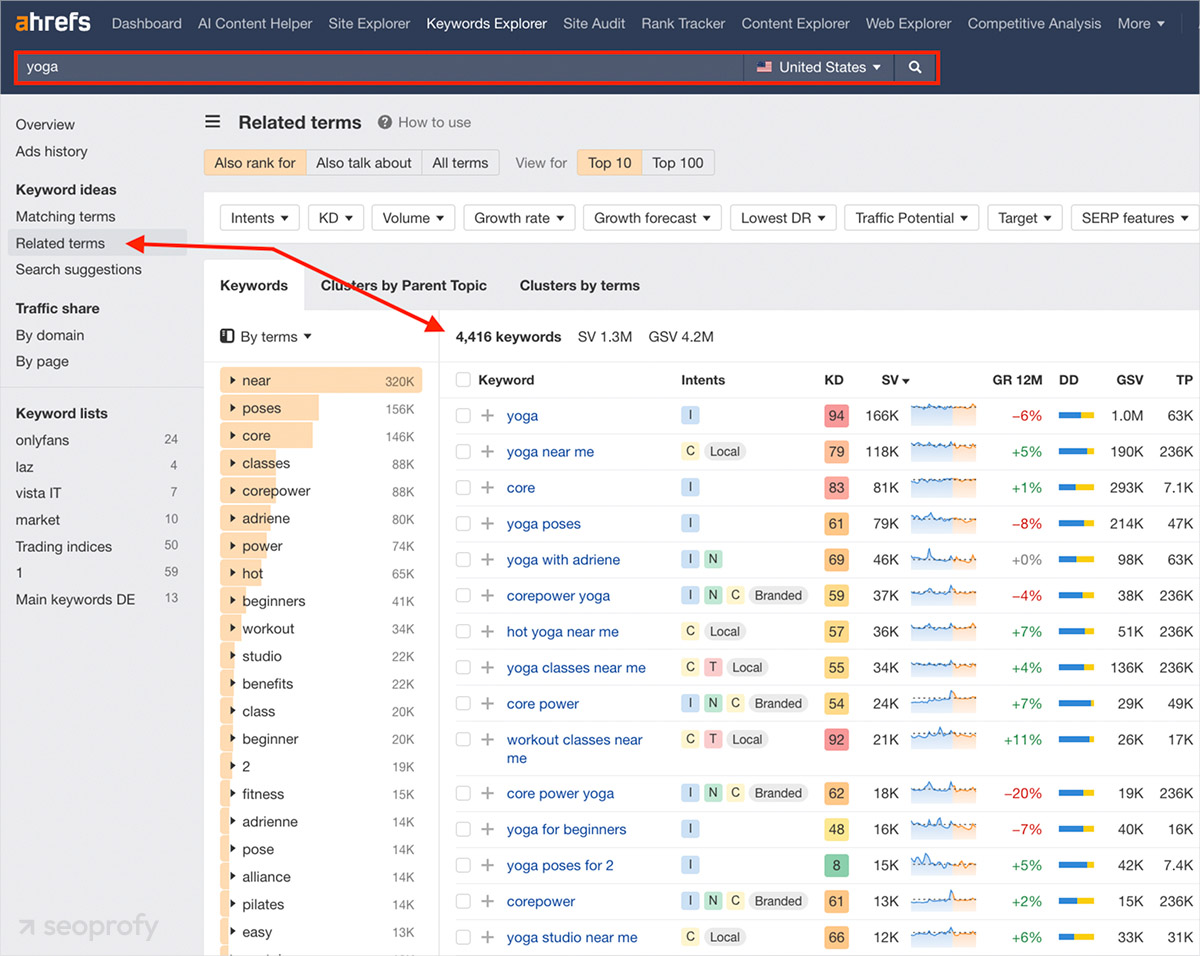
Ahrefs conducted an experiment: they chose a page already ranking in Google and added semantically related terms to the content. As a result, it started ranking for a variety of additional keywords, and organic traffic increased by 129.7%.
So, search engines analyze your content overall. If your text covers the topic more comprehensively than your competitors, it has a better chance of getting an organic traffic boost.
Incorporate Entities to Provide Context and Depth
Entities are objects that search engines use to create connections between data: people, places, organizations, or concepts related to your topic. This is called semantic search.
For example, the query cat species is recognized by the search engine as a topic related to breeds, average age, diet, and sounds of cats. This information is stored in the Knowledge Graph, a base where entities are interconnected.
So, in Google’s search results, you don’t just get links, but intent clusters such as Breeds, Lifespan, and Diet.

You can use these search engine features to increase organic traffic to your own website. Here’s a great example: When you search for “mushrooms,” the Wikipedia page ranks at the top because its content is well-optimized for semantic search.
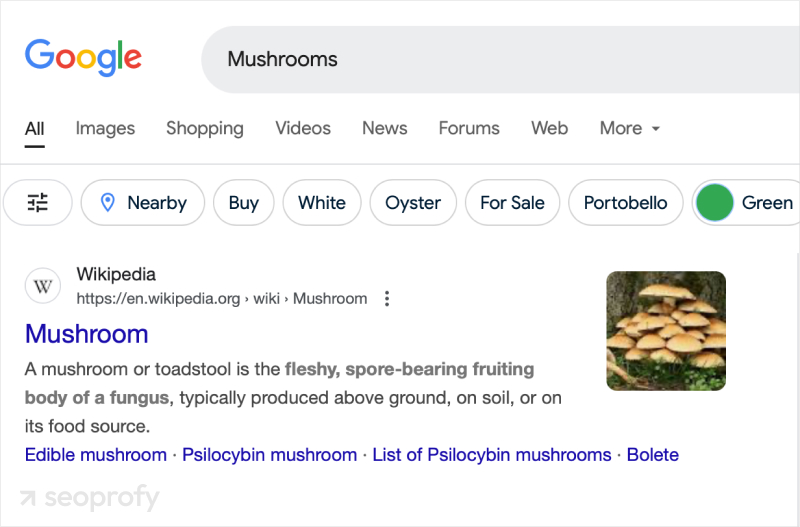
The page covers the topic comprehensively: origin, biology, culinary uses, etc.
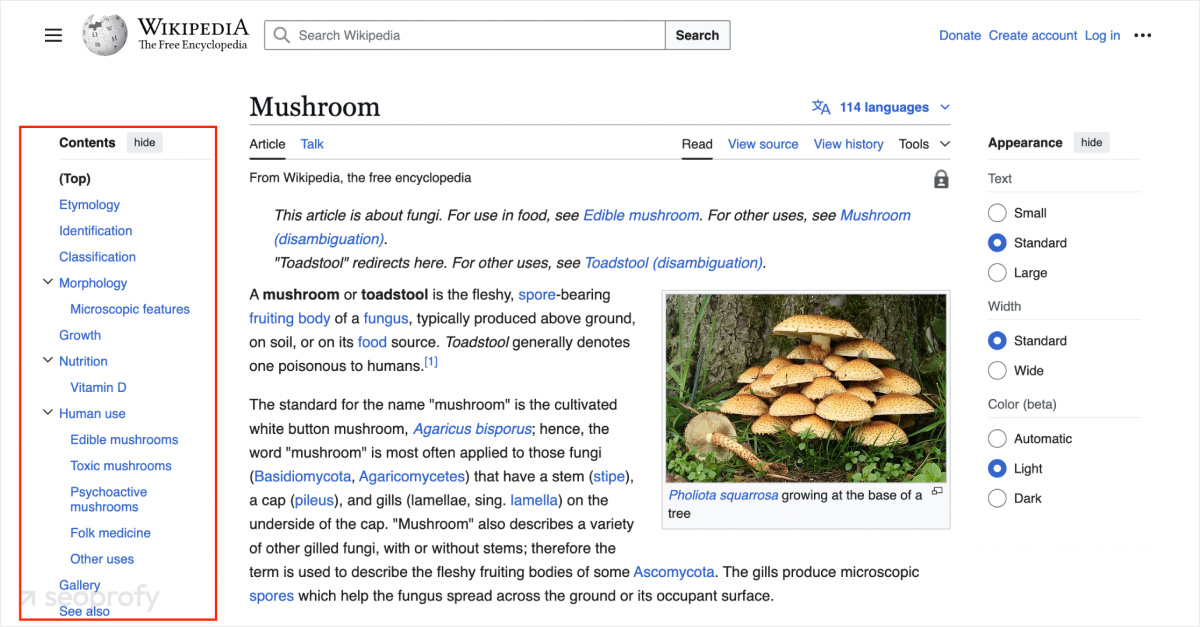
If you’re aiming to rank higher in organic search results, try to cover topics thoroughly and work with entities:
- Identify entities. For example, if the topic is coffee, consider different types, brewing methods, and growing regions.
- Analyze queries. SEMrush or People Also Ask section show what else users are interested in.
- Structure your information. Google values articles where data is logically connected: Arabica → origin → taste → brewing.
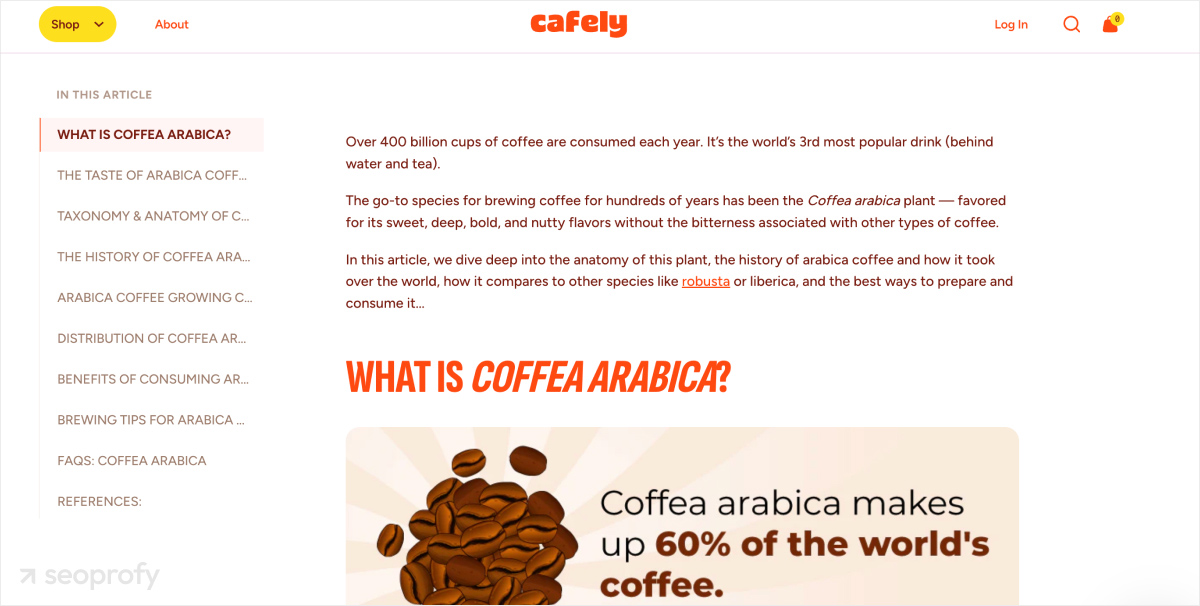
Optimize HTML Headings
HTML headings define the content hierarchy. H1 sets the main topic, H2 breaks it into key sections, and H3-H6 add more detail. They make texts easier to read and scan.
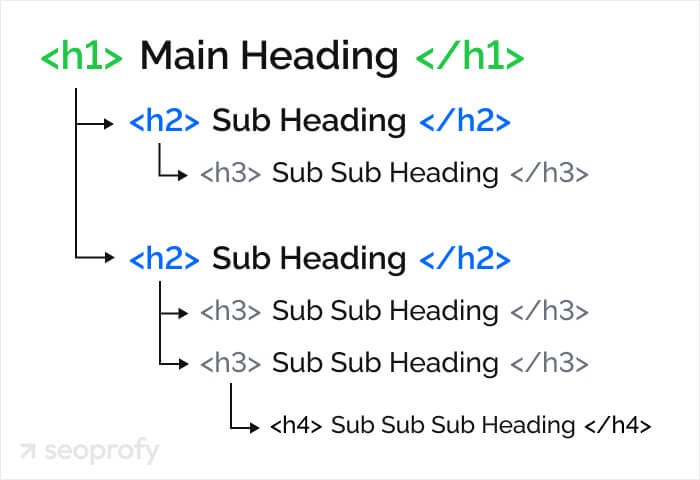
For example, here’s an article with the H1 “The ultimate guide to morning exercises – for men & women.” Next come the H2 sections, like “Benefits of morning exercises,” which are further divided into H3 subsections.
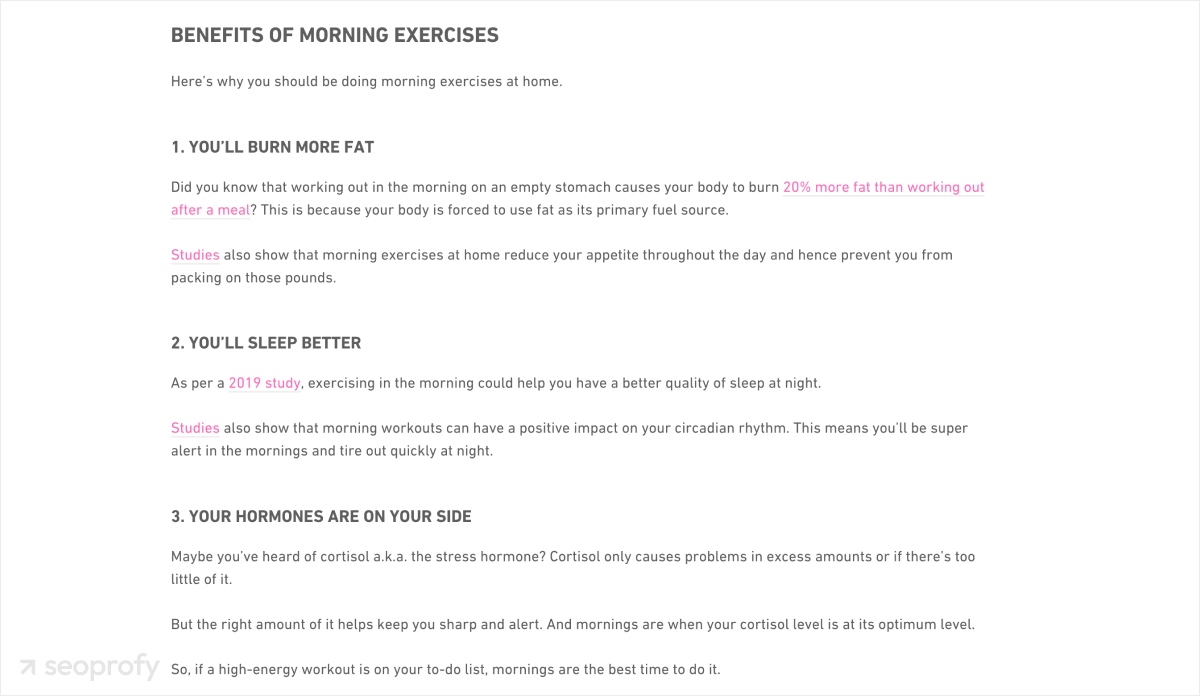
Google’s John Mueller explains: “Headings help us better understand the content of a page. They can also provide context.” So, try to structure your headings properly, following the logical flow of your content.
The golden rule is having one H1 per page. However, HTML5 allows multiple H1s. In such cases, the main H1 should be the title of the entire page, while other H1s should relate to specific sections.
Сheck site’s heading structure with these tools:
- Screaming Frog shows heading usage errors (duplicates, missing levels, etc.).
- Ahrefs Site Audit helps evaluate the overall heading status on your site.
2. Refresh and Update Outdated Content
Has your page once attracted more organic traffic and ranked well, but then saw a drop in performance? It’s possible that the information is outdated: it’s time to add new facts and fresh research. Republishing old blog posts with new content and images can increase organic traffic by up to 106%.”
In Google Analytics/Ahrefs, find pages that have seen a decrease in traffic over the last 6–12 months. Review the content and replace outdated recommendations. For example, if you’re updating an article on web analytics, instead of “Use Universal Analytics,” add “Use Google Analytics 4.”
Next, analyze the keywords. Ahrefs Rank Tracker can help. For example, keywords like SEO trends 2023 can be updated to SEO trends 2025. Additionally, update the trends themselves as well and replace external links to outdated sources/removed pages with more current ones.
Don’t forget about landing pages. Outdated offers, irrelevant CTAs, and old product details can impact conversions.

Keeping your content fresh is a big part of how to increase organic traffic and stay at the top of search results. Update regularly:
- News and trends → every 3–6 months;
- Landing pages → whenever offers/pricing/CTAs change;
- Guides and evergreen content → once a year.
3. Create and Expand Your Blog to Increase Organic Search Traffic
A blog is one of the best tools to drive organic search traffic, but its effectiveness directly depends on consistency. Сompanies that blog receive 55% more visitors than those that don’t. For example, HubSpot published a case study about Marco, a company that invested in blogging and SEO, which led to a 2,500% organic traffic increase in just one year.
Publish 16–20 posts a month and get 2x the traffic of companies posting fewer than 4. Push past 20 posts and get 5x more organic traffic.
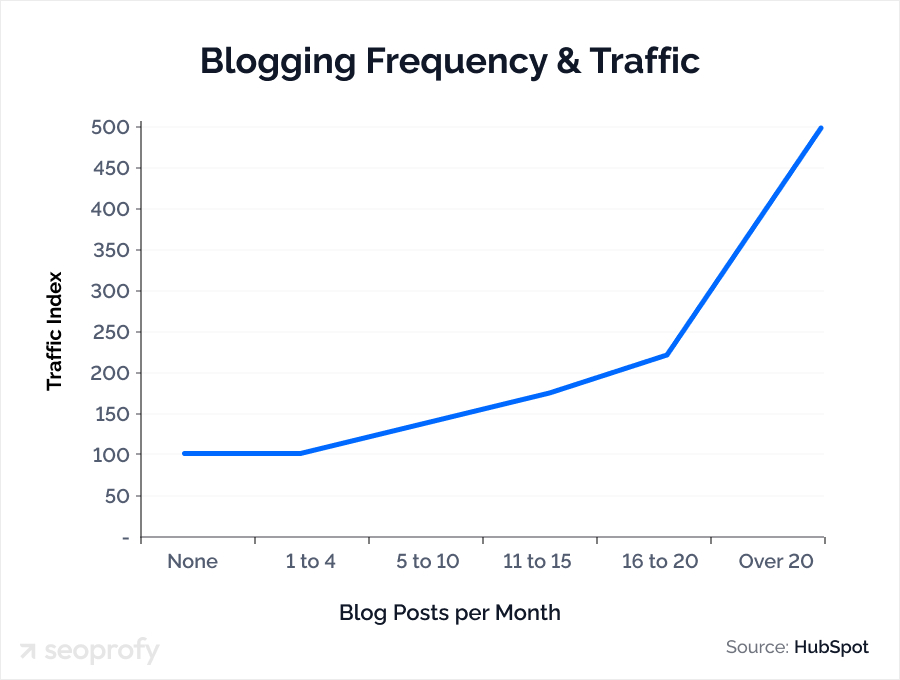
However, a blog without a content strategy is just a collection of random posts. So, to increase organic traffic, you need to create one.
How Do You Know If Your Content Works?
Simply publishing content isn’t enough: 53% of marketers say that effective performance tracking drives their success. To understand what works and what needs improvement, track these metrics:
- Use Google Analytics/Ahrefs to monitor website traffic growth and ranking changes. Are target keywords gaining organic search engine visibility? Any new ones appearing?
- Measure time on page, CTR, and bounce rates in Search Console to assess interaction.
4. Update Your Meta Tags for Better Click-Through Rates
Meta tags are brief descriptions of a web page for search engines and users. They don’t directly affect rankings but determine whether someone will click on your link. If the title and meta description grab attention, the CTR improves, helping to increase organic traffic. Pages with meta descriptions get, on average, 5.8% more clicks than those without them.

The main meta tags are:
- Title tag: Displays as the main heading in organic search results. It should be attention-grabbing, 55-60 characters long, and include the keyword.
- Meta description: A brief description of the page. It should be 150-160 characters long and contain LSI keywords to improve relevance.

Use Ahrefs/SEMrush to identify pages that need meta tags improvement and Google Search Console to monitor CTR for each page. You can also manually test different versions to find the best-performing formats.
Google may update your meta tag if it considers it irrelevant. Make sure your titles and descriptions clearly represent the page’s content to avoid that. However, for websites with thousands of pages (e.g., catalogs or marketplaces), it’s convenient to use dynamic meta tags generated automatically.
5. Build High-Quality Backlinks
Backlinks are links from other websites to yours, and they remain one of Google’s top ranking factors. On average, the page in the first position gets 3.8 times more backlinks than pages ranked from 2nd to 10th. If you want to rank higher and increase organic traffic, focus on building a strong backlink profile.
To understand the current state of your backlink profile, use Ahrefs. This tool will show the quantity/quality of inbound links and also potentially harmful or spammy ones.
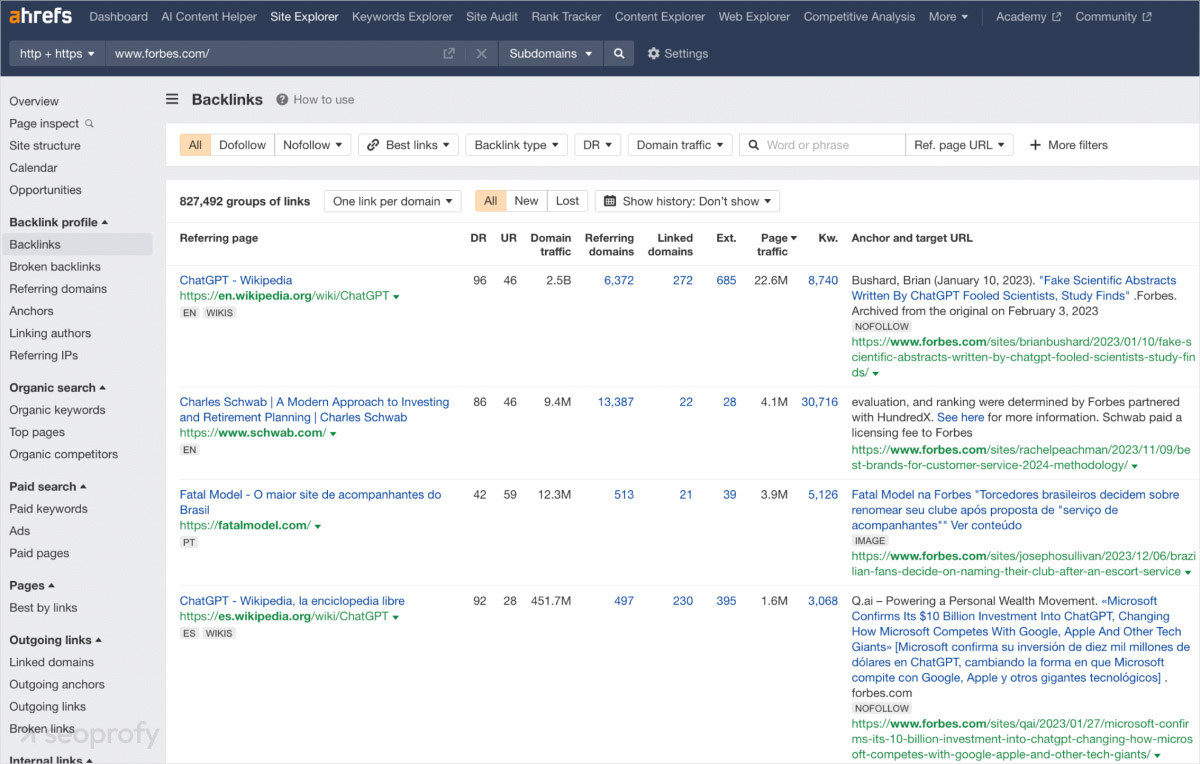
A few strong links can increase your organic rankings. Here are the signs of a quality backlink:
- The link comes from an authoritative and reliable site that’s related to your content (check authority with Ahrefs/Moz).
- The anchor text (the clickable text of a link) is descriptive and relevant.
- The link is integrated organically and provides value to readers.
Here’s an example of a poorly integrated link:
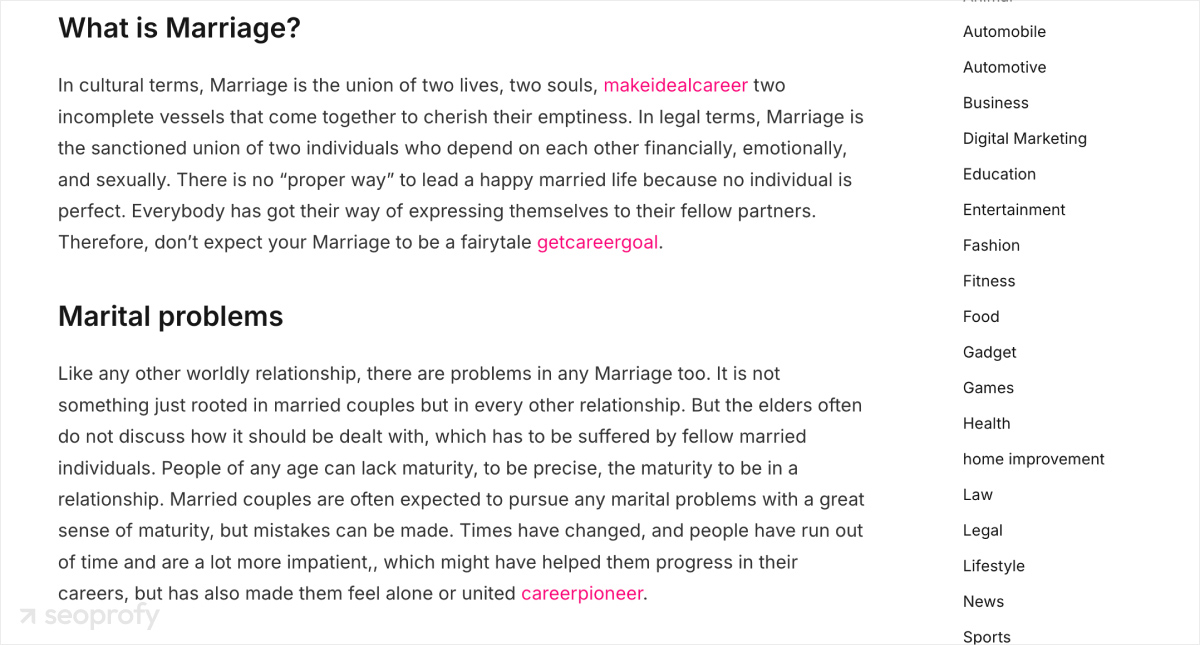
Many jump into link building, grabbing links wherever they can. The result? They end up with a collection of spammy forum backlinks. Google tends to simply ignore them. That’s worth keeping in mind if you’re learning how to drive organic traffic.
You can build backlinks in different ways, but every approach falls into one of three categories:
| White-hat | Gray-hat | Black-hat |
| Strong content, guest blogging, and forum engagement naturally attract links and are risk-free. | Certain borderline techniques, such as link exchanges. | Using PBNs/ link farms and tactics that violate search engine guidelines. |
If your site isn’t bringing in enough visitors, it’s time for an SEO upgrade. Our proven strategies help you climb search rankings and increase your organic search traffic by:
- Finding missed opportunities
- Improving keyword strategy
- Boosting content effectiveness
- Fixing technical SEO issues

6. Strengthen Internal Linking for Better Navigation
Internal links are connections between pages on the same website. They guide users and help search engines map the site. However, it’s not enough to scatter links throughout your site — you need a strategy. Start with an audit. Google Search Console has a section that allows you to see the distribution of internal links on your site. This will help you:
- Identify orphan pages (no internal links) and pages with few internal links.
- Find low-priority pages that are receiving too many internal links.
Pages with the most backlinks from other authoritative sites are your “capital.” Link from these pages to the ones you want to rank higher in search results to pass some of the “authority.” You can also add internal links to your navigation menu.
Internal links perform better when placed near the top of a page, as they attract more clicks. Google also recommends using descriptive anchor text instead of vague phrases like “Click here”.
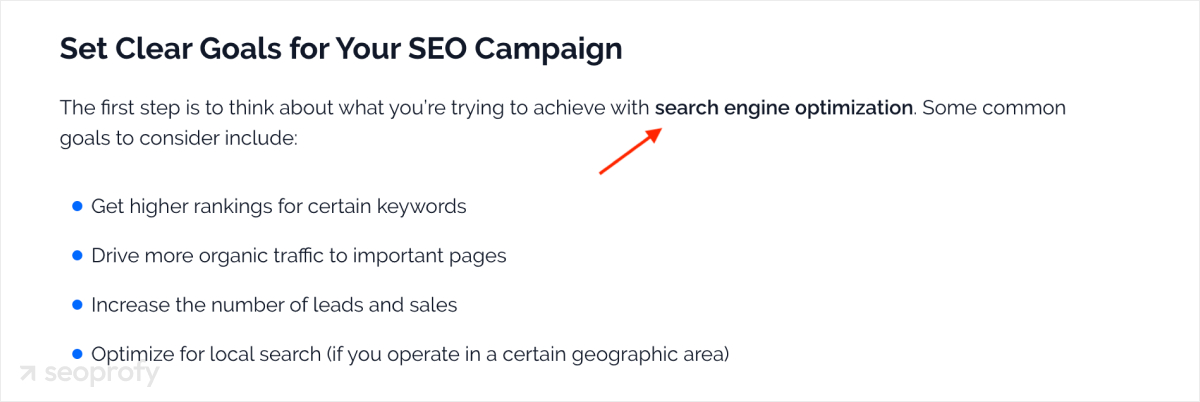
7. Add an FAQ Section to Address User Pain Points
The FAQ (Frequently Asked Questions) section helps address questions, doubts, and objections, as well as saves people time. But it’s also great for search engine optimization.
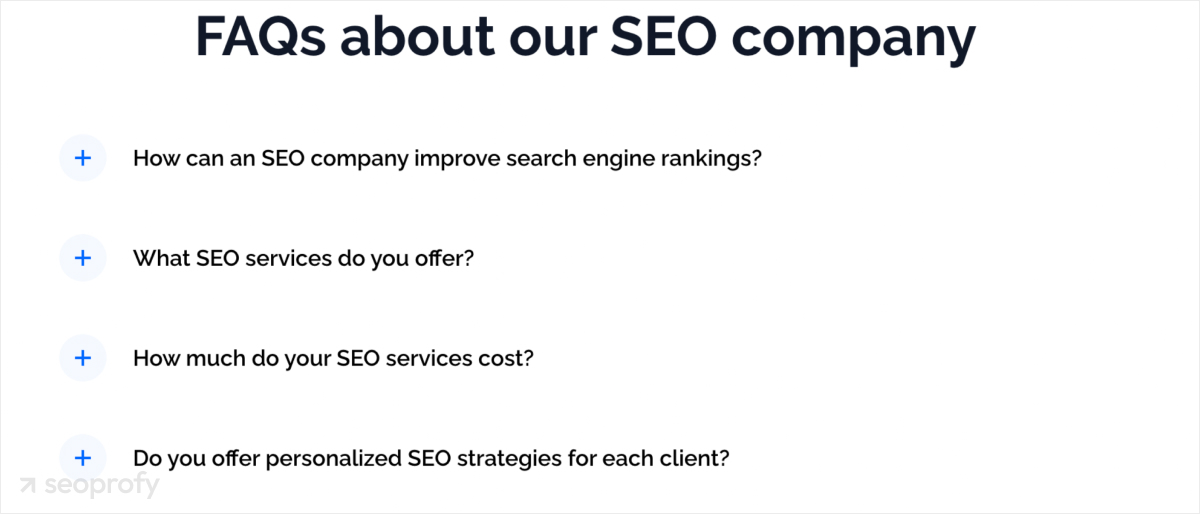
FAQ markup once helped sites appear in rich search results, bringing more organic traffic. But in August 2023, Google changed the rules: FAQ snippets now rarely show up (except for authoritative sources like government and medical websites).
For everyone else, FAQ markup no longer improves search visibility directly. But the section still matters. It keeps users engaged and adds depth to your content.
Here’s how to make it useful:
- Learn the pain points of your target audience and analyze queries in Google Search Console to formulate questions that address the problems.
- Make sure the phrasing matches how people actually search.
- If an answer needs more explanation, give a quick summary and link to a full breakdown (helps with internal linking and site navigation).
So, SEO alone won’t justify an FAQ section anymore. User value will.
8. Fix Technical Issues to Improve Crawlability
Technical issues hinder search engines from understanding and indexing your website. As a result, poor rankings, less traffic, and frustrated users. Fixing technical problems is a must if you want to get organic traffic increase.
Identify and Fix Any Broken Links
Around 66% of websites contain at least one broken link. They send users nowhere, which is frustrating and reduces trust. Google tracks bounce rates (how quickly users leave your site), and while the impact is debated, it could affect your rankings.
To find broken links, use Google Search Console/Screaming Frog. Replace, remove, or redirect (301) broken links. If you reduce bounce rates, Google interprets it as a sign that your content is valuable, which can improve your rankings and help drive organic traffic.
Ensure Your Site is Mobile-Friendly
More than 62.54% of global web traffic comes from mobile devices. If your site isn’t mobile-friendly, users won’t have a great experience and will move on to competitors. Google also factors this into rankings, so optimizing for mobile is a must to get more organic traffic.
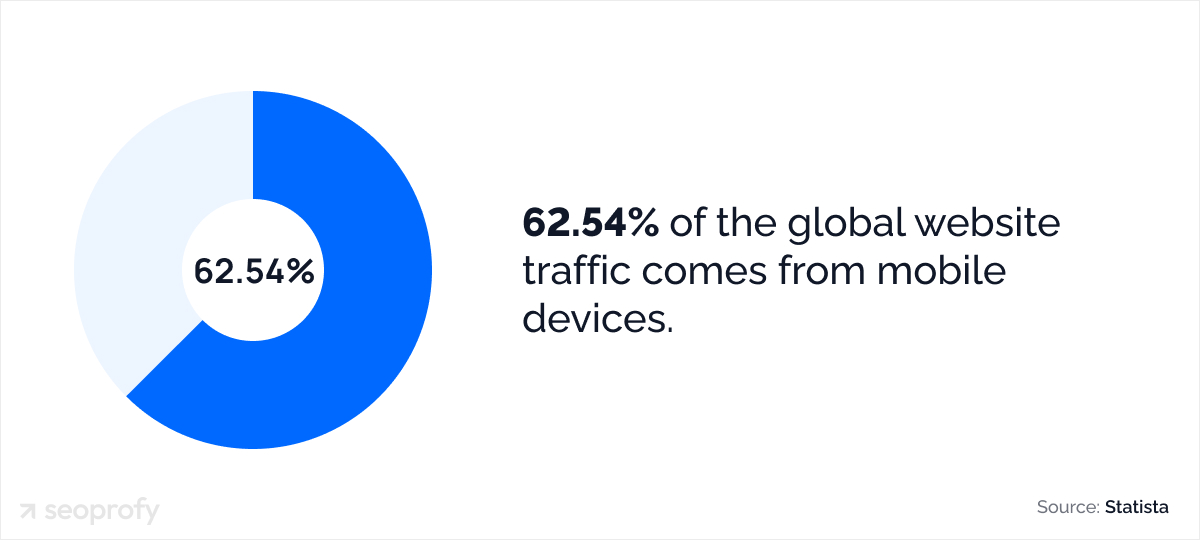
Run your site through the Lighthouse Test to see how it holds up. Keep the text readable, buttons easy to tap, and pages loading fast.
Improve Core Web Vitals Metrics
Core Web Vitals are three metrics that Google uses to evaluate user experience:
- Largest contentful paint. The time it takes for the main content to load. The goal is under 2.5 seconds. To speed up loading, compress images, use caching, and optimize code.
- Interaction to next paint. A new metric that replaces FID. Measures the overall responsiveness of a page to user interactions. The goal is under 200 ms. To improve INP, remove unnecessary scripts and use a CDN.
- Cumulative layout shift. The stability of the content during loading. The goal is less than 0.1. To stabilize content, set image and video sizes to prevent shifting text during loading.
Check out how Google PageSpeed Insights analyzes Core Web Vitals:
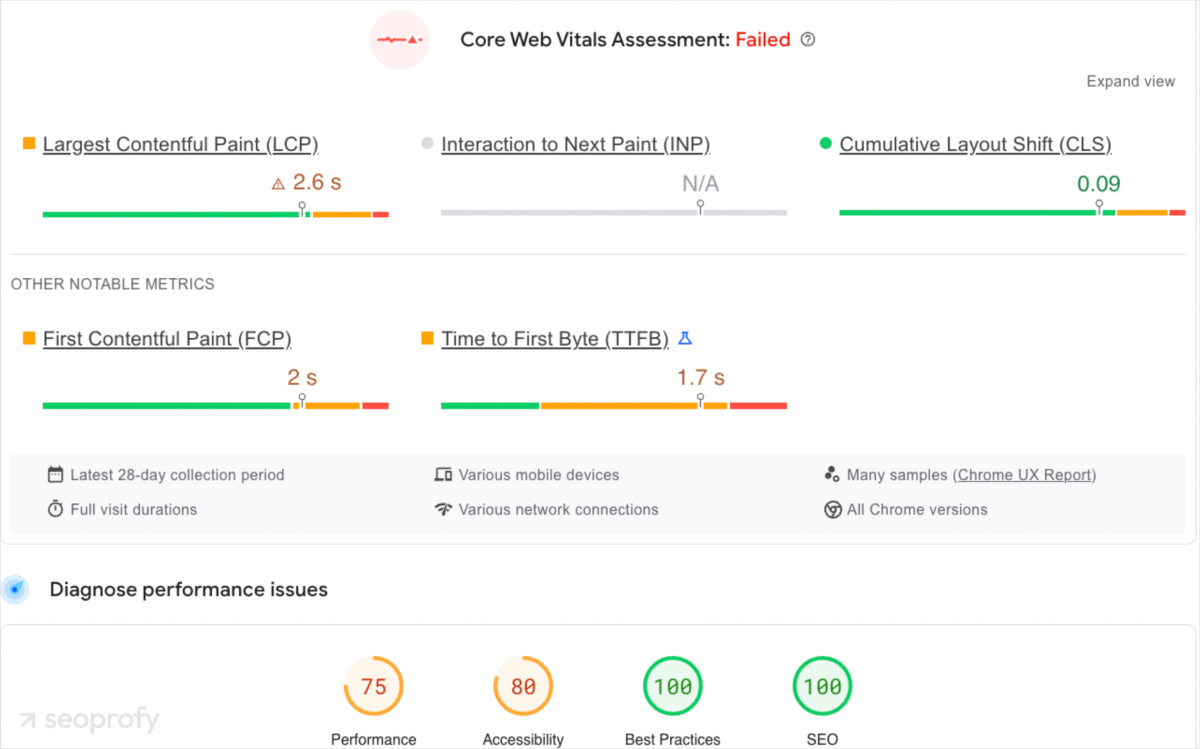
Technical SEO is one of the most complex aspects of digital marketing. It’s common for businesses to rely on SEO agencies for that specialized support.
9. Get Included in AI Overviews and Featured Snippets
Featured snippets are text blocks that Google highlights at the top of search results. They usually provide direct answers to queries and often attract more clicks than even the top positions in search.
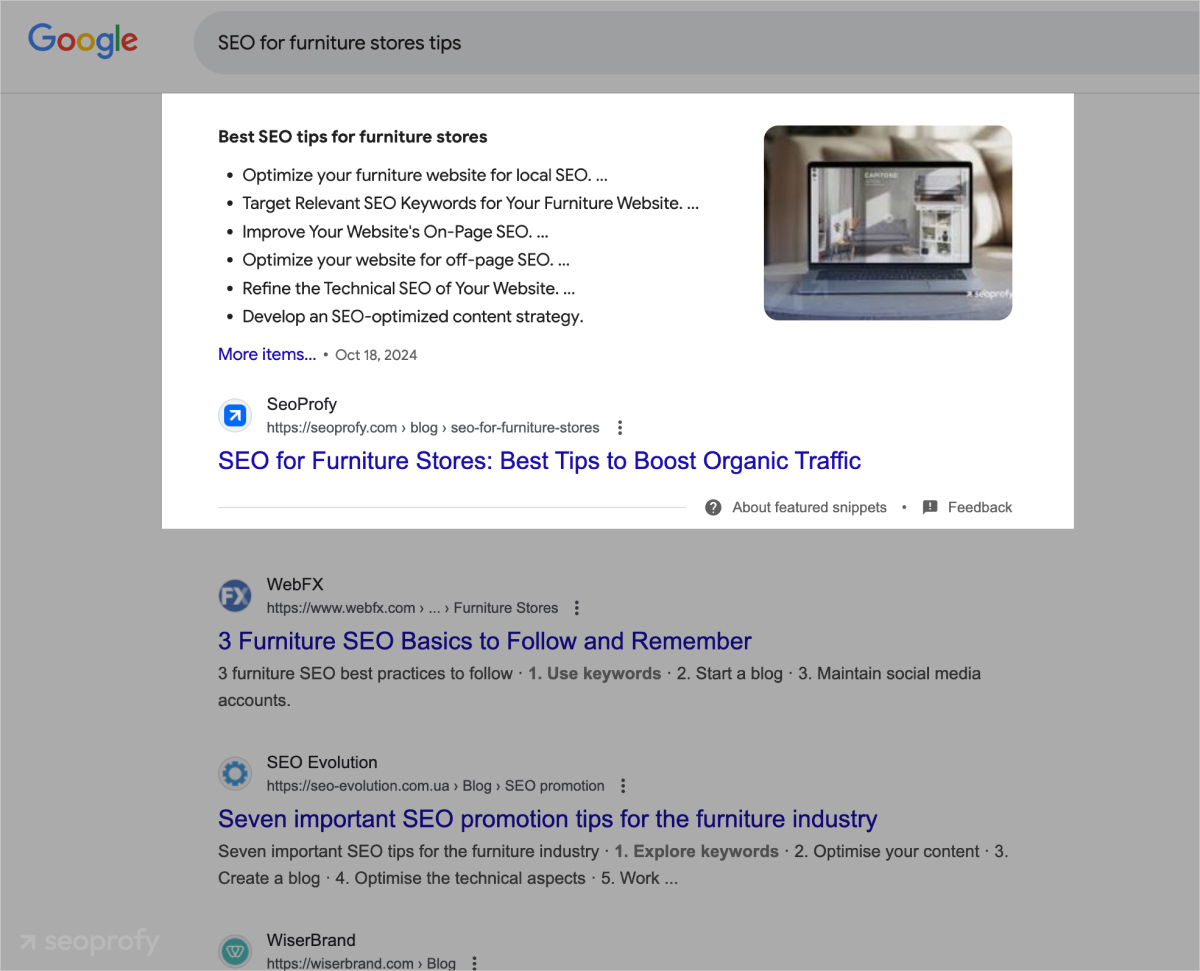
Google pulls featured snippets from content that delivers clear answers. To increase your chances of getting featured, format your content: use markup, lists, and popular queries like “what is,” “how to.” Start each section with a direct answer before expanding on the topic.
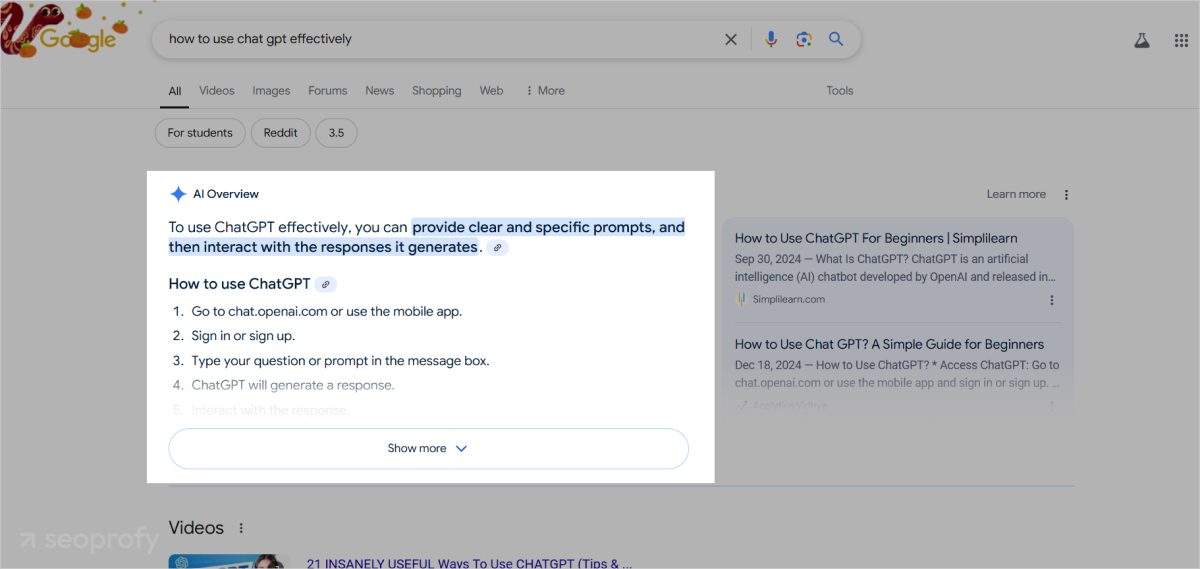
AI-generated overviews pull relevant content, similar to featured snippets. Structured data helps AI models understand and surface your content. But don’t rely on it as a shortcut because it won’t guarantee inclusion. Focus on making your content authoritative, well-organized, and regularly updated.
10. Follow Google’s E-E-A-T Guidelines
Google introduced E-E-A-T (Experience, Expertise, Authoritativeness, Trustworthiness) to assess content quality. These factors help determine how credible a site is. It’s especially critical for YMYL sites that impact health, finances, safety, and society’s well-being.
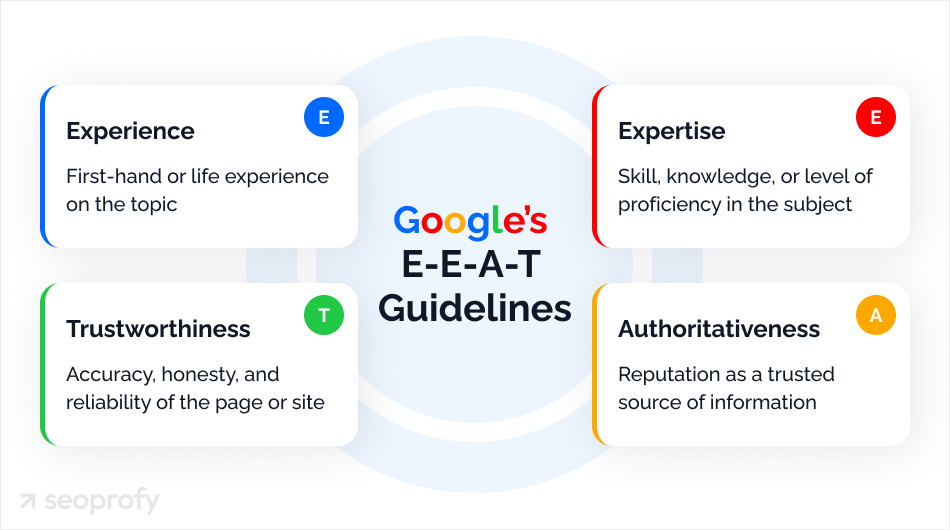
If a site falls short of these standards, it could see lower rankings or even be removed from search results. Here’s what to focus on to stay on Google’s good side and grow organic traffic:
Legal and Contact Pages
Clear legal pages matter just as much to users as they do to Google. Well-structured sections like Privacy Policy, Terms of Use, and Contact Us show that your website operates transparently and respects users.
On your Contact Us page, list a real address, phone number, and email. If possible, add details about your team or office. The About Us page helps visitors understand who you are and what your brand represents.
Reviews and Testimonials
If you’re trying to figure out how to boost organic traffic, establishing authority is a way. Reviews with names or photos make your business real in the eyes of users. People trust firsthand experiences, and Google sees them as a quality signal.
Case studies let you prove your impact. If you’re in the legal field, show how you helped a client win a case or protect their interests. Numbers, graphs, and facts are all solid proofs of what you can do.
Security and Trust Signals
Google has prioritized user data protection since 2014. It’s not a direct ranking factor, but it’s still part of the ranking system and affects visibility. Without an SSL certificate (https), browsers flag your site as unsafe, and many visitors will leave.
Annoying pop-ups, intrusive ads, and hidden links drive people away. The harder it is to navigate, the less trust your site builds. Cut the clutter and add trust signals like “Secure Payment” badges. A site that feels safe keeps users around.
Closing Remarks
A lot of people give up before they see results, thinking SEO doesn’t work. So, if you’re wondering how to increase organic traffic, the answer is simple: don’t stop. Every strategy in this article is backed by real results, but they all take time. Stay the course, focus on creating a successful SEO campaign, and soon enough, your site will start to maximize organic traffic consistently.




